|
Related FAQs: Bivalves, Bivalves 2, & Bivalve Identification, Bivalve Behavior, Bivalve Compatibility, Bivalve Selection, Bivalve Systems, Bivalve Feeding, Bivalve Disease, Bivalve Reproduction, Tridacnids, Tridacnid Clam Business, Tridacnid Identification, Tridacnid Selection, Tridacnid Compatibility, Tridacnid Systems, Tridacnid Lighting, Tridacnid Placement, Tridacnid Feeding, Tridacnid Disease, Tridacnid Reproduction, Flame Scallops,
Related Articles: Mollusks, Giant
Clams/Tridacnids,
/The Conscientious Marine
Aquarist
Bivalves: Clams,
Oysters, Mussels... Class Bivalvia, Pt 1
To: Pt.
2, Pt. 3
|
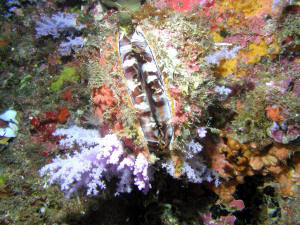
|
|
By Bob Fenner
|
Spondylus varians, Fiji
|
Bivalve Mollusks: Shellfish with two opposing shells
that are hinged at one end with an elastic byssal material and brought
together with attached muscles. May be attached to hard substrates,
burrowed into same or wood, buried in sand, mud or free-living, able to
jettison about with powerful discharges of water from their exhalant
siphons.
Most bivalves are filter-feeders, sifting food
through their gills, which also function as respiratory organs. Some
notable aquarium species, the giant clams (family Tridacnidae) utilize
endosymbiotic algae (zooxanthellae) to produce food through exposing
their mantles to bright light.
About 7,700 species worldwide... Some 129 in
Hawaiian waters of which 66 are endemic.
Ark Shells, Family Archidae: Have a row of fine teeth along
the hinge line of their solid ribbed shells. Some attached, others
living in sand. Twelve Hawaiian species.
| Arca ventricosa Lamarck 1819, the Ventricose
Ark Shell. One of eight species found in HI. Found through-out
Indo-Pacific attached to rocks with straight hinge facing outwards.
to eighty feet in depth, three inches in length. A dead shell and a
live, attached animal off of the Big Island,
Hawai'i. |
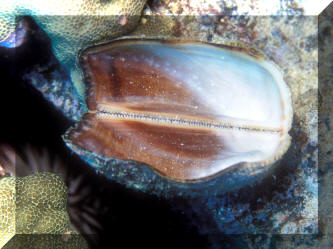
|
Bigger PIX:
The images in this table are linked
to large (desktop size) copies. Click on "framed" images
to go to the larger size. |
|
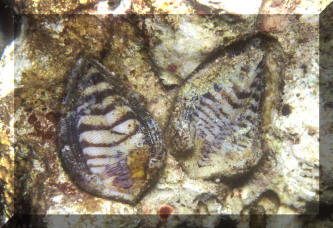
|
Oysters, Family Isognomidae:
| Isognomon alatus, Flat Tree-Oyster. To 3 in. Roatan
2016. TiffB pic. |
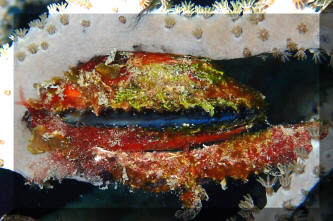
|
| Isognomon radiatus, Lister Purse Oyster. To 2.5 in.
Often found in clusters. Roatan 2016. |
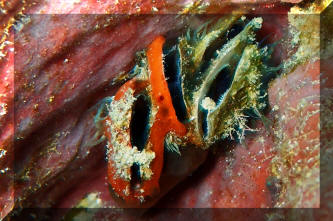
|
Pen Shells, Family Pinnidae: Winglike, triangular in shape,
anchored, pointing with their sharp ends into the soft
substrate.
| Atrina pectinata (Linnaeus 1767), the Pen
Shell. India to Australia; Indonesia, Philippines, Japan. There are
other species called Pen Shells, and some of these make their way
into the ornamental trade. Typical appearance in an aquarium,
mounted vertically, but the Seastar is not a friend. |
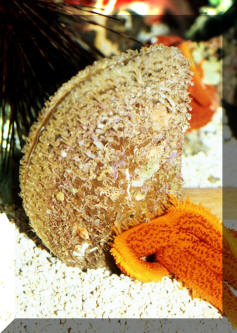
|
Family Ostreidae: True Oysters
| Dendostea frons, the Frond
Oyster. Tropical West Atlantic. To two and a half inches in length.
A couple off of St. Lucia attached to an octocoral skeleton, and
another off of St. Thomas, U.S.V.I. Note zig-zag interlocking
valves. |
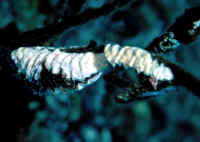 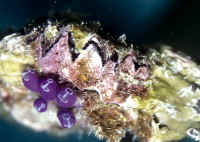
|
Bigger PIX:
The images in this table are linked
to large (desktop size) copies. Click on "framed" images
to go to the larger size. |
|
%20MD.JPG)
%20MD.JPG)
|
| Hyotissa hyotis (Linnaeus 1758), the
Honeycomb Oyster. Uneven zig-zag openings on shell. South Africa to the Red
Sea, out to New Guinea, Indonesia and the Philippines. This group in Pulau
Redang, Malaysia, and N. Sulawesi. |
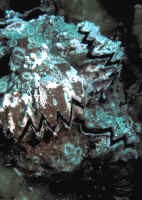 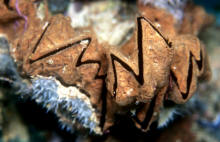
|
Bigger PIX:
The images in this table are linked to large
(desktop size) copies. Click on "framed" images to go to
the larger size. |
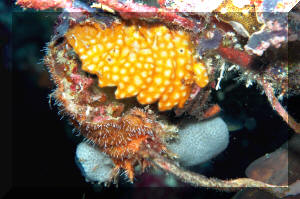

MD.JPG) |
Flame Scallops that are not.
Pen Shells, family Limidae: A popular item, particularly Lima
scabra out of the Caribbean. Most all of these die in short order from
starvation. Need frequent "immersion type" feedings...
daily.
| Lima (Limaria now Ctenoides) scabra (Born
1778), sold as "Flame Scallops" in the aquarium interest,
this is aka the Rough Fileclam of the Penshell family Limidae. Can
"swim away" if threatened. A beautiful animal that
generally starves in captivity due to a lack of food. Aquarium
images of not so healthy and healthier specimens, and a real good
specimen... in the wild (St. Thomas, U.S.V.I.) |
Bigger PIX:
The images in this table are linked to large (desktop size) copies.
Click on "framed" images to go to the larger size. |
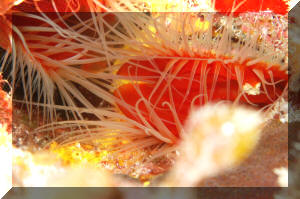
%20MD.JPG)
%20MD.JPG)
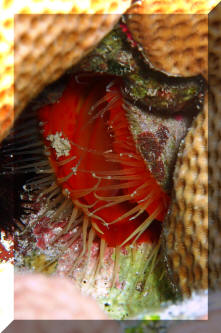 |
| Limaria fragilis Gmelin 1791, the Fragile
File Shell. Indo-Pacific; Red Sea to Japan, Australia. Takes a
beating if stocked with many types of fishes, crustaceans. Needs to
be inserted in rock cover. Queensland, Australian photo. |
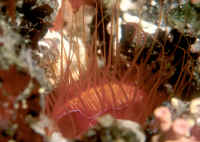
|
Bigger PIX:
The images in this table are linked
to large (desktop size) copies. Click on "framed" images
to go to the larger size. |
|
%20MD.JPG)
%20MD.JPG)
|
| Limaria orientalis (Adams & Reeves
1850), File Shell. Uniformly Red with thicker tentacles than other
Files. Found in sand or between rocks (like here). Western Pacific;
New Guinea, Indonesia, Philippines. N. Sulawesi image. |
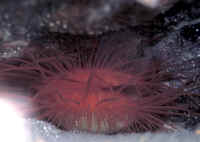
|
To:
Pt. 2,
Pt. 3
|
|

